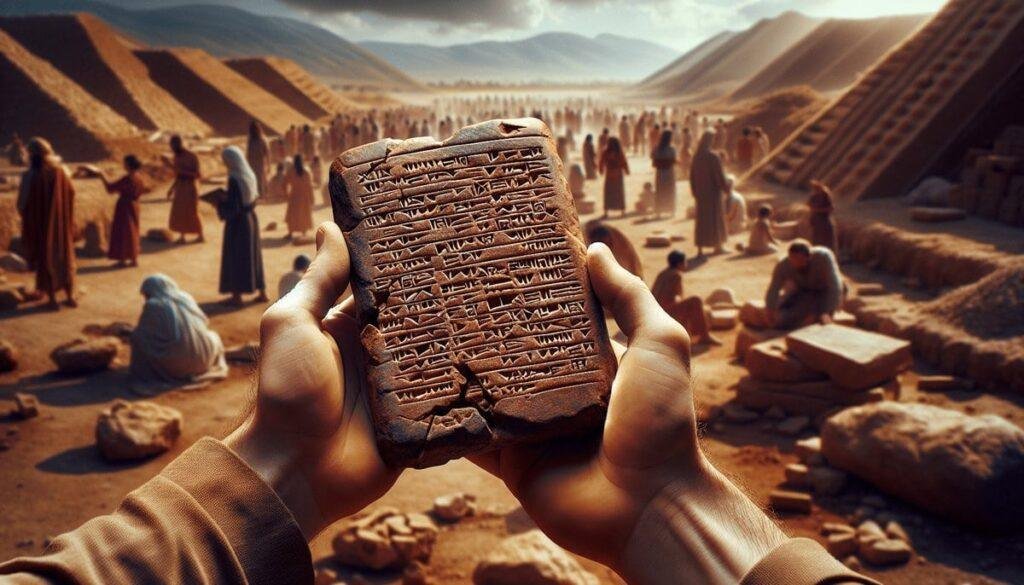Have you ever wondered what daily life in one of the long-lost biblical cities might have been like? The discovery of a once-hidden city, mentioned in biblical texts, offers an enlightening glimpse into ancient life. This article titled “Lost Biblical City Found: Ancient Life Revealed” explores the contexts of this incredible find, delving into its biblical significance, archaeological evidence, and its implications for both history and the modern world.
Introduction
The recent unearthing of a lost biblical city has captured the attention of historians, archaeologists, and the general public alike. Such a discovery adds a layer of color and detail to our understanding of ancient societies mentioned in biblical texts. This article aims to convey the profound historical significance of this find, offering an accessible yet academically rich narrative for those intrigued by biblical archaeology. By examining the context of the discovery, the artifacts unearthed, and the broader significance, a clearer picture of this ancient civilization comes into view.
Discovery Context
Biblical Reference and Historical Background
The city in question has been referenced in various biblical texts, contributing to its mystique and the allure of its rediscovery. Often associated with accounts of trade, political power, or cultural prominence, this urban center has long been the subject of both scholarly debate and popular imagination. Traditionally, it was thought to be a vibrant hub of economic and cultural activity, integral to the narrative frameworks within which it appeared.
Geographic Location and Recent Findings
Located in a region known for its abundance of ancient artifacts, the city was discovered after a concerted effort by a multidisciplinary team of experts. The geographical site once was thought to be barren of any major archaeological significance, yet persistent excavations revealed traces of structures, roadways, and a grid-like city layout that point towards a bustling metropolis. Recently, new methods in remote sensing and ground-penetrating radar have allowed for a more nuanced exploration of the site, leading to several groundbreaking discoveries.
Archaeological Evidence
Specific Artifacts Unearthed
Among the treasure trove of finds are items such as pottery, inscriptions, and religious artifacts that speak to the daily life and spiritual practices of the city’s inhabitants. Pottery fragments indicate trade relations with neighboring regions, showcasing a cross-cultural exchange that defined this city as a hub. Inscriptions carved on stone tablets offer insights into the administrative workings, revealing a society that was well-organized and bureaucratic in nature. Religious artifacts provide evidence of the diverse theological landscape, suggesting a community involved in rich, complex ritual traditions.
Dating Methods and Physical Descriptions
Employing carbon dating and stratigraphy, experts have determined that the city flourished between several key historical periods. Beneath layers of earth and time, the excavation unveiled city walls, marketplaces, and residential structures. This physical layout confirms the biblical descriptions that alluded to a thriving, fortified city providing shelter and sustenance for its denizens. The stone pavements and remnants of roofing materials offer clues to the urban planning and architectural styles prevalent at the time.
Expert Interpretations
Leading archaeological experts posit that this city was a key player in regional politics, economy, and religion. The juxtaposition of rich cultural artifacts with ordinary household items paints a vivid picture of everyday life. Some suggest that the city may have served as a critical juncture for the dissemination of both goods and ideas, playing a role in the broader sociopolitical dynamics of the time. Quotes from esteemed archaeologists add nuanced viewpoints, indicating a balanced perspective on the city’s role and legacy.
Significance
Biblical Implications
The re-discovery of this city has profound implications for the field of biblical scholarship. It serves as a tangible link to biblical narratives, offering evidence that can either support or refine existing interpretations. Religious scholars are particularly interested in how these findings could illuminate the historical context of biblical stories, adding layers of understanding to sacred texts.
Historical Impact
Historically, the city’s rediscovery reshapes the understanding of the regional history. It challenges previous assumptions about the demographics and the socio-political fabric of the era. By providing new data, it supports a more intricate narrative of interconnected ancient societies.
Modern Understanding and Research Status
In modern times, this discovery signifies the power of technological advancement in archaeology. With ongoing research, the site serves as a vibrant field for academic inquiry, offering answers and raising new questions about ancient human civilizations.
Conclusion
The discovery and exploration of this lost biblical city have offered a wealth of knowledge, reshaping perceptions around ancient life as described in biblical texts. As excavations continue, further implications for historical and biblical scholarship are likely to arise. For those interested in the intersections of faith, history, and archaeology, keeping abreast of this ongoing exploration is not only enlightening but essential. Understanding such a site offers a rare opportunity: to see pieces of the past illuminated with the clarity of the present.





